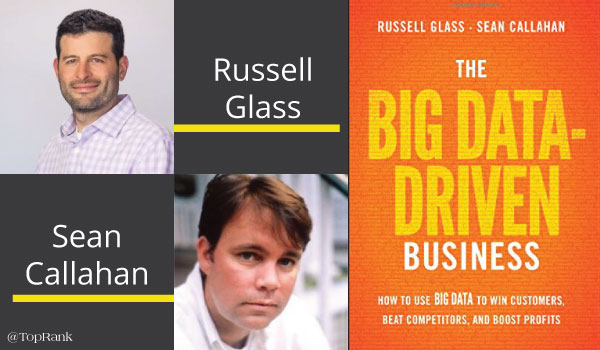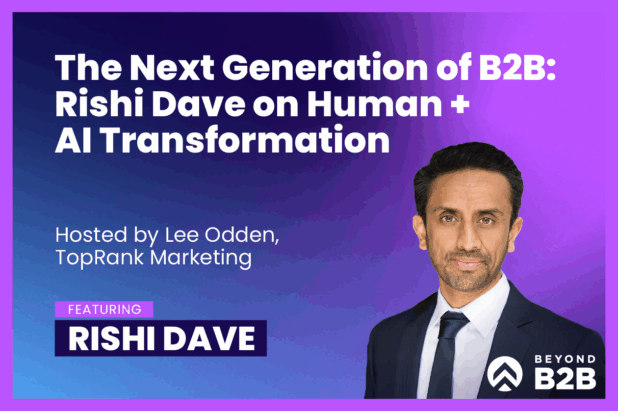
How many times have you made a purchase either online or in a store and found that you either received recommendations or coupons after your purchase that seemed to be exactly what you were looking for? That experience is one example of how companies are using big data to create a better experience and more effectively target buyers based on previous behaviors.
The sheer amount of trackable activity that exists today has begun to make data collection and analysis a much more manageable task, and the impact is in the numbers. Research has found that for a Fortune 1000 company, increasing data accessibility by just 10% has the potential to result in more than $65 million dollars in additional revenue.
To help companies understand how to use data more effectively, Russell Glass, Head of Marketing Products for LinkedIn and Sean Callahan, Senior Manager Content Marketing for LinkedIn Marketing Solutions (client) collaborated to write a book titled The Big Data-Driven Business. This book focuses on ways that brands can utilize big data to win more customers, outshine the competition and increase company profits.
As marketers, our ability to collect, synthesize and make decisions based on data is a necessity to compete in today’s marketplace. To make that transition easier, I’ve included some of the biggest data related marketing lessons I drew from this book as well as an interview with authors Russell and Sean on the opportunities with big data.
#1 – Data & The New Buyer’s Journey
Customer relationships used to involve enthusiastic handshakes, and wining and dining prospects to make a sale. Today’s self-directed buyers often make it through a vast majority of the sales process before even speaking with a company representative. Therein lies the challenge and opportunity for marketers to use data informed marketing to be the best answer for customers, wherever they are searching.
“By the time a B2B buyer reaches out to the salesperson, there is often little to be learned. The salesperson is perhaps there to negotiate some terms and take the order.”
Customers are now armed with a great deal of information that helps them decide which company or product is the best fit for their needs. By analyzing how prospects interact with emails, move through the company website and interact on social channels are all signals of what they’re searching for.
#2 – How to Use Data to Learn More About Your Customers
You can hire the most talented marketing team in the world, but if you have a crap product, your chances of developing a strong customer base goes out the window. Think of some of the products you use most as a consumer. Those could include things like Spotify streaming radio, Amazon or Netflix. One thing each of these companies have in common is that they “listen” to what it is that you like, and adjust recommendations accordingly.
“Data-driven, customer-focused companies use the data they amass as a matter of their daily business processes to understand their customers–both individually and en masse–better with every single transaction.”
Digital marketers can take a similar approach by finding opportunities to interact with customers and prospects to learn what their priorities are, what they care about and what their biggest problems are that your solution can solve.
#3 – Always Use Data Responsibly
Sometimes the lines can seem fuzzy in terms of how exactly marketers can use the data collected about their customers and prospects. While certain information can help you better target customers, you have to avoid creating a sense that you are being intrusive or manipulative for the end user.
“The best companies are embracing complete transparency when it comes to consumers’ privacy concerns.”
It is the responsibility of brands to use the information gathered to improved customer experience while still respecting their privacy and security. Ensure that you’re fully aware of all the regulations that exist around privacy and understand how this may impact how you use data collected about your customers.
Author Interview With Russell Glass & Sean Callahan

Russell Glass
Head of B2B Marketing Products, LinkedIn
Why should marketers be looking through a lens of big data to influence their marketing strategy?
Customers and prospects are online, and the buyer’s journey has moved online in so many ways. Forrester Research estimated that as much of 90 percent of the buyer’s journey has taken place before a prospect reaches out to a salesperson. These prospects are researching online, consulting their peers on social media, reading reviews, and (we hope) visiting our websites. Marketing, via the data that these prospects create when they surf the Web, has tremendous insight into who these prospects are and how they’re behaving. This data gives the marketing department the best picture of who their customers should be and what they want. This is the path to becoming what all businesses should strive to be: data-driven and customer focused.
What is the low hanging fruit of data collection that most marketers aren’t taking advantage of?
I would say there are two critical areas of low hanging fruit. One is the internal customer data that marketers have spread throughout the company in various departments: sales, accounts receivable, customer service. This internal data, when consolidated and analyzed properly, can reveal to marketers what characteristics their best customers share. Using this data, marketers should be able to create a picture of what kinds of prospects they should be going after and build an account-based marketing approach to going after prospects who match the characteristics of their best customers. The second area of low-hanging fruit for marketers is website visitors and email/blog subscribers. By analyzing these prospects, who have raised their hand to show their interest in your company, marketers should be able to use data to target very effective and efficient messages to prospects who are already poised to move through the funnel.
In your experience, how has your journey using data informed marketing helped you in your current role at LinkedIn?
The biggest way data has helped is better understanding what our members are doing on our site and especially within our feed. Knowing what members are doing and the kinds of information they are consuming enables my team to build products that are going to deliver the best results for customers who are trying to reach those members at the right time with the right message. So it becomes a win-win: members get more valuable and relevant content, and marketers get better results for their dollars spent.

Sean Callahan
Senior Manager Content Marketing, LinkedIn
Now that three martini lunches are a thing of the past, how can marketers use big data to take the same hands-on approach with customers that are self directed on their journey?
In the book, Russ and I write about what the three-martini lunch was really about. Salespeople took out their prospects to entertain them, to give them information about the industry as a whole, and ultimately to begin talking about selling them specific products and services. Now that the three-martini lunch is largely a thing of the past (even though martinis themselves have made a comeback), the relationship-building is now taking place online via content marketing and lead nurturing. Marketers use their content to entertain their prospects, to talk about industry trends and make their companies thought leaders, and finally talking specifically about products and services.
It says in the book that, “Speed delivers customer satisfaction and customer satisfaction delivers more searches.” How can companies use big data to create a better, speedier experience for customers?
When Google was analyzing data on how visitors used their search engine, they found that speed was essential to retaining the interest of these visitors. They discovered that even a few tenths of a seconds difference in delivering search results caused users to abandon their searches at a higher rate – which meant that fewer paid search advertisements were served. So Google focused on delivering their search results fast, because that’s what customers wanted. And it’s why there are 10 search results delivered on page 1, rather than, say, 20. I think the lesson of Google’s experience with the speed of search results isn’t about speed in and of itself; it’s about using data to give customers what they want and delivering an excellent customer experience. It’s all about becoming a data-driven, customer-focused business.
In your experience, why is it so important for marketers to embrace marketing technology?
It goes back to the buyer’s journey. So much of the buyer’s journey takes place online, and you need technology as night-vision goggles to have insight into how your customers and prospects are behaving online. With this insight (driven by data, which is in turn discovered by technology), you can understand your customer better and be a better marketer.
Are You Making Data Informed Marketing Decisions?
The need for data informed marketing decisions to become “the best answer” for your customers will become increasingly more important over the next few years. Get a leg up on your competition by committing to incorporating more data-driven insights about your customers into your digital marketing strategy.


